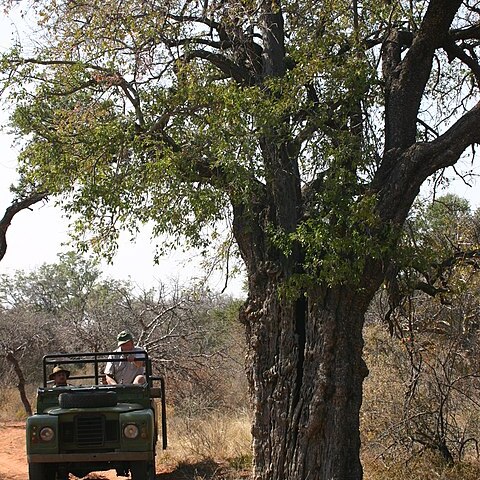A shrub or tree. It loses its leaves during the year. It can grow 10-20 m high. The bark is grey and rough and cracks into squares. The leaves are small and narrowly oval. They have rounded teeth along the edge. The leaves turn red before falling. The leaf stalks have 2 small glands towards the end near the leaf. The flowers are in long groups and appear before the leaves. Male and female flowers are separate on the same tree. The fruit is a small capsule with 3 lobes. They split open into 3 segments suddenly and noisily. The seeds are round with a papery covering.
Leaf blades 2–7 × 1–3.5 cm, elliptic-ovate, obtusely acuminate or obtuse at the apex, rounded at the base, shallowly crenate, chartaceous to thinly coriaceous, green on upper surface, paler beneath, often becoming bright red or plum-coloured before falling; lateral nerves in 6–14 pairs.
Female flowers: pedicels very short at first, but extending to 10 mm long in fruit; sepals 5, 1 mm long, triangular-ovate, acute, flat; ovary 1 mm in diameter, 3-lobed, smooth; styles 3, 1.5 mm long, stigmas red.
Inflorescences often appearing before the leaves, up to 4 cm long, narrowly cylindric, dense flowered, brownish; bracts spirally arranged, 1.5 mm across, transversely ovate, eglandular.
Tree, up to 10 m high. Leaves ovate to elliptic, 25-70 x 18-35 mm, with 2 glands at junction with petiole. Inflorescences slender catkin spikes. Flowers brown.
Male flowers: sepals (2)3, minute, obovate-suborbicular, concave, brownish-green; staminal column 1 mm high, anthers 0.75 mm long.
A deciduous tree usually 12 m tall, sometimes up to 16 m in height, with a copious caustic milky latex, dioecious or monoecious.
Petioles 2–10 mm long, adaxially canaliculate, with 2 small hemispherical glands at the apex.
Seeds 4 × 3 mm, broadly ovoid-subglobose, smooth, light brown streaked with darker brown.
Fruit 5–7 × 12–13 mm, 3-lobed, smooth, green at first, becoming yellowish-brown.
Bark dark greyish-brown and rough on the bole, smoother and lighter above.
Young twigs brownish, older ones greyish.
Stipules minute, fimbriate, soon falling.
Wood hard, dark, smelling of sandalwood.


